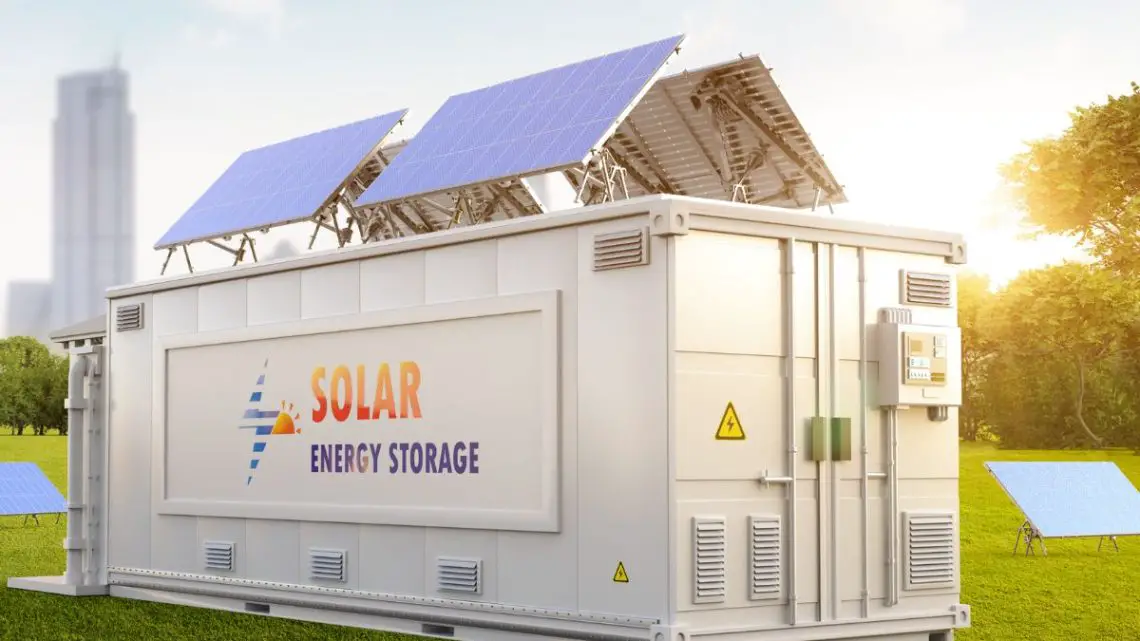
Norwegian startup uses solid hydrogen for solar energy storage breakthrough
November 1, 2023Photoncycle claims it can store solar power from summer to winter cheaper than batteries.
Photoncycle, a startup from Norway, is tackling interseason storage of solar energy, which could save the abundance of solar energy generated in sunny months to be used for heat and electricity in the winter. The company says solid hydrogen is the key to bringing the solution to the market in as little as a couple of years.
A patented solution of solid H2.
Photoncycle has developed a breakthrough technology for solar energy storage. The device is a copper cylinder wrapped in a thick styrofoam. The cylinder contains a patented solution of solid hydrogen, which reportedly has more efficient storage capabilities than batteries or liquid H2.
Presently, the copper cylinder energy storage device is no larger than a chair and has been built in the basement of an accelerator in the Oslo Science Park. The company’s plan is to install a larger model of the cylinder, approximately three cubic meters large, in the ground a few yards from residential properties.
Solar panels on the roofs of nearby buildings will feed the system with energy to be stored in the device. Any excess energy will be sold to the power grid.
Due to the lack of storage for solar energy generated in the summer, only about 50% of what is produced is used, says Bjørn Brandtzaeg, Photoncycle’s founder.
“The other 50% increasingly has no value, because when it’s produced it’s basically going to be dumped or curtailed. If you can store that surplus, and then release it during the winter or when you actually have demand for energy, then you have a real possibility to make a difference,” Brandtzaeg said.
The company locked up the H2 molecules to make solid hydrogen.
Brandtzaeg partnered with people in academia to create a non-flammable solution that prevents excessive loss of energy in the conversion process.

“We’re locking up the hydrogen molecules in a solid to basically fix them,” Brandtzaeg explained. “We’re using a reversible, high-temperature fuel cell, so we’re assisting a fuel cell which both can produce hydrogen and electricity in the same cell.”
This solid hydrogen means there is no need to cool down the hydrogen, which makes it non-flammable and gives it a higher density compared to a lithium-ion battery.
Capturing heat to heat houses.
 Currently, one of the challenges Photoncycle is facing with its solar energy storage system is that it loses heat, a result of turning hydrogen in and out of the fuel cell. The goal of the company is to capture this heat and use it to heat homes. The belief is that the excess heat could effectively provide energy to a household as Brandtzaeg notes that 70% of a household’s energy needs are related to heating.
Currently, one of the challenges Photoncycle is facing with its solar energy storage system is that it loses heat, a result of turning hydrogen in and out of the fuel cell. The goal of the company is to capture this heat and use it to heat homes. The belief is that the excess heat could effectively provide energy to a household as Brandtzaeg notes that 70% of a household’s energy needs are related to heating.
According to the Photoncycle founder, the system, which takes about one day to install and includes solar panels, is hooked up directly to the existing infrastructure and can replace natural gas with renewable energy in a combined heat and power system.
The company plans to use Denmark, which has some of the highest energy prices in Europe, as its test market for its solar energy storage with solid hydrogen system.
Science FAQ’s About Solid Hydrogen:
Q1: What is solid hydrogen? Solid hydrogen is just the element hydrogen but in a solid state. It becomes solid when it’s very cold, below -259.14 °C.
Q2: Who first collected solid hydrogen and when? James Dewar was the first person to collect solid hydrogen, and he did this in 1899.
Q3: How heavy is solid hydrogen? Solid hydrogen is not very heavy. It has a density of 0.086 g/cm3, which makes it one of the lightest solids.
Q4: Does hydrogen have different solid forms? Yes, at low temperatures and under high pressure, hydrogen can form several different solid phases. These are all made up of H2 molecules.
Q5: Can you tell me more about these different solid forms? Sure:
- Phase I is created at low pressures and temperatures. The H2 molecules can move around freely in this phase.
- In Phase II, the H2 molecules can’t move around as much.
- Phase III appears when the pressure is around 160 GPa.
- Phase IV appears at a few hundred degrees Kelvin and pressures over 220 GPa.
Q6: Why is it hard to study the different solid phases of hydrogen? It’s difficult because hydrogen doesn’t interact strongly with X-rays and the samples are usually very small.
Ready to test your knowledge on the most abundant element in the universe? Take our fun and engaging Hydrogen Quiz now!



 HFN News is your leading source for fresh hydrogen and renewable energy updates. Amid the fast-paced growth of hydrogen companies, we provide top-notch news and insights about this exciting sector. Our coverage spans from hydrogen cars to global sustainable initiatives, and we highlight the latest in green jobs and developing hydrogen hubs. We invite you to share your local hydrogen news and explore today’s renewable energy job listings on our site. Thanks for choosing HFN News as your trusted guide to the hydrogen and renewable energy world!
HFN News is your leading source for fresh hydrogen and renewable energy updates. Amid the fast-paced growth of hydrogen companies, we provide top-notch news and insights about this exciting sector. Our coverage spans from hydrogen cars to global sustainable initiatives, and we highlight the latest in green jobs and developing hydrogen hubs. We invite you to share your local hydrogen news and explore today’s renewable energy job listings on our site. Thanks for choosing HFN News as your trusted guide to the hydrogen and renewable energy world!